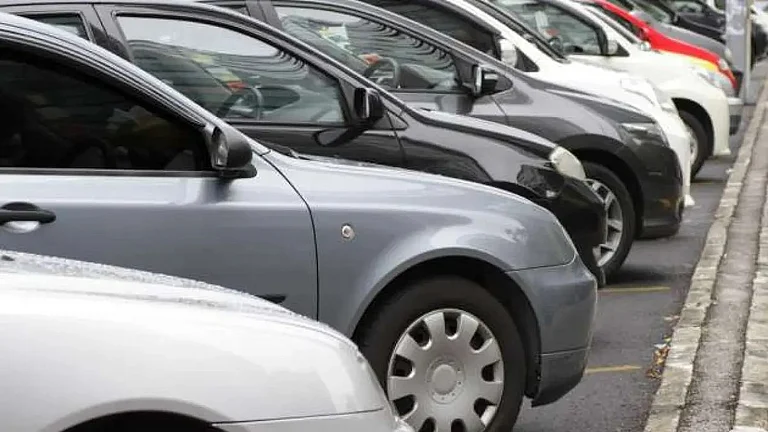As the next Reserve Bank of India's (RBI) Monetary Policy Committee (MPC) gears up for its next meeting from August 4 to 6; markets, banks and policymakers alike are leaning in with anticipation. The committee will meet when India's retail inflation has softened, growth moderated and the central bank is now operating under a neutral policy stance.
Governor Sanjay Malhotra indicated last week that a further adjustments to the policy rate remain on the table, depending on how the data unfolds. "Inflation has come down to about 2.1%, but monetary policy is forward-looking, guided more by the outlook 6 to 12 months ahead. These are difficult decisions," said Malhotra.
Easing Inflation, Further in Sight
India's Consumer Price Index (CPI) inflation moderated to a 77-month low of 2.10% in June due to a decline in food inflation, which is also at a 77-month low of 0.20%, led by a continued decline in food items, particularly vegetables, pulses and spices. "We believe that the upcoming July 2025 CPI inflation data is set to breach the lowest ever historical print," said Dr. Soumya Kanti Ghosh, group chief economic adviser at State Bank of India, in a report.
The RBI has projected inflation to be at 3.7% in FY26. The central bank had earlier projected the inflation for Q4 at 4.4% but numbers for Q1 came in lower; hence, Q4 may now be revised downward as well. In 2025, the central bank had delivered three repo rate cuts totalling 100 basis points (bps), which lowered the benchmark repo rate to 5.50%. In the June meeting, RBI also brought the cash reserve ratio to 3% from 4% to infuse more liquidity into the banking system.
Public sector banks have responded more effectively to the RBI’s policy than their private peers, cutting average lending rates on fresh rupee loans by 31 bps by May, compared to a 20 bps reduction by private lenders. The data highlights how the transmission of monetary policy remains uneven across the banking system.
Mixed Signals
Even after the central bank's easing measures, economic momentum remained patchy. Various High Frequency Indicators (HFIs) show a mixed outlook on growth. Goods and services tax (GST) collection slowed to a 50-month low of 6.2% year-on-year in June after a strong growth in the beginning of the year. Domestic air passenger traffic growth also slowed to 3.5% YoY from 9.4% YoY in the last fiscal year, likely due to geopolitical issues. Urban housing demand has also softened, affecting housing sales.
Volume-based indicators, too, are showing weakness. The Index of Industrial Production (IIP) slowed to a 10-month low of 1.5% YoY. Growth in the core sector slowed to 1.3% in Q1, compared to 6.3% in the year-ago period. Passenger vehicle sales remained flat in Q1, up just 0.3% YoY, while two-wheeler sales grew 4.7% YoY on the back of improved rural demand. Meanwhile, bank credit growth also dropped to 9% in June against 16% last year during the same period.
On a brighter note, Purchasing Managers’ Index (PMI) readings for both manufacturing and services remain robust, and Fast-Moving Consumer Goods (FMCG) firms have reported stronger urban demand in Q1 FY26. Further, government capex has seen a strong growth of 54% YoY so far (Apr-May), albeit partially impacted by a low base. Going forward, the satisfactory progress of the South-west monsoon (9% above Long Period Average) has resulted in higher kharif sowing (6.6% YoY), which augurs well for rural demand.
The global economic outlook also remains uncertain and volatile. The brief conflict in West Asia last month caused a sharp spike in oil prices. Tariff threats from US President Donald Trump are also in line. "The impact of the trade tariffs on inflation, particularly the domestic inflation part, consisting of 75% weight in the overall basket, can lead to further deflation in domestic relative prices," SBI noted.
Sectors most exposed include clothing and footwear, as well as household items such as electronics and manufactured goods, which together comprise around 10.3% of the CPI basket.
A Rate Cut Ahead?
With a firmly benign inflationary outlook expected to continue, despite turbulence stemming from trade-related restrictions and the uneven transmission of such external shocks, SBI’s Ghosh believes the groundwork is being laid for an additional 25 bps rate cut—possibly sooner rather than later—to stimulate economic activity.
Echoing this view, Sameer Narang, Head of the Economic Research Group at ICICI Bank, said that with inflation trending lower and growth showing no signs of acceleration, there is now space for further monetary easing. "We believe this opens up policy space for an additional 25bps rate cut, taking the terminal rate to 5.25%. When would the MPC cut the policy rate? We believe that August would be the appropriate time for the same. Given the muted inflation scenario," he noted.
However, Narang cautioned that headline inflation is expected to pick-up in Q4 and FY27 (base effect), making it difficult for the MPC to cut the repo rate later in the year.
Not everyone is convinced of further easing just yet. Paras Jasrai, senior economic analyst, India Ratings, said that the MPC may opt to hold rates steady in August after front-loading 100 bps of cuts already and the change in stance to neutral from accommodative. Jasrai also pointed out that even if headline inflation is down, the core inflation reached 4.4% in June highest since September 2023 largely due to n uptick in inflation of jewellery items.
The declining inflation is expected to provide a significant boost to the real wages of the households in FY26, according to him. Ind-Ra’s calculation also suggested that 1% increase in real wages leads to a 106 bps increase in consumption demand, which further gives a fillip of about 60 bps to the gross domestic product (GDP) growth.
"We continue to expect, at max, one more 25 bps cut this fiscal, unless there are surprises from global development or growth declines sharply," he added.

































